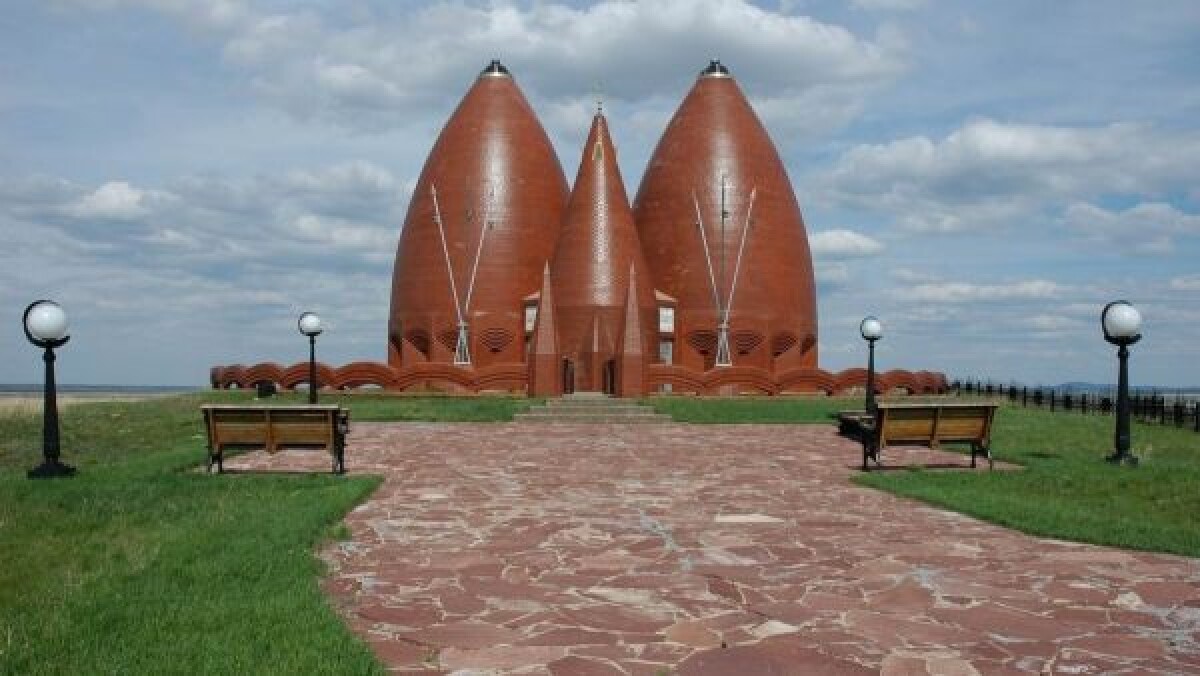
The focus on these figures in post-independence Kazakhstan, including the lavish memorial complex and a monument in Petropavl is based around the idea of Kazakhs of different tribes working together in pursuit of a greater common goal. Karasay Batyr was born in present-day Almaty Region from Shapyrashty tribe of the Great Zhuz. Agyntay Batyr was from the north of the country, a member of Argyn tribe of the Middle Zhuz. Their many joint exploits in battle against the Dzhungars included involvement in the Kazakh victory at the battle of Orbulak in 1643 and helping to free Kazakh Khan, Salkam Zhangir from captivity. Karasay Batyr died 1671, at the age of 73 and was reportedly buried here in the Kulshinbay Hills of North Kazakhstan. Agyntay Batyr died a year later and was buried next to his friend.
The form of the monument is striking: two cones of brown brick, 16m in height, vaguely resembling oast-houses or giant termite mounds, stand side by side. In front of them is a slightly smaller building, also circular-based and with a roof shaped like an upside-down cone. This is a mosque, its position between two mausoleums uniting them in prayer. Three tall metal spears fan out in front of each of two mausoleums. Within two mausoleums, two graves are marked by kulpytas and koytas, engraved with images of their weaponry and the symbols of their tribes. Piles of rocks around the back of the monument symbolize the graves of family members of batyr. A plaque records that the memorial complex was built under the initiative of President Nursultan Nazarbayev.
